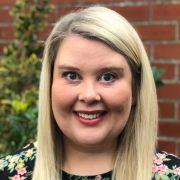- New research conducted by researchers at the University of 91ÖḟĠċ and funded by The Brain Tumour Charity aims to find weaknesses in the ability of glioma cells to repair their DNA and survive treatment
- Gliomas are a particularly aggressive and difficult to treat group of brain tumours â with glioblastomas being the most dangerous
- More than 3,000 people are diagnosed with a glioblastoma in the UK each year, and these brain tumours typically have a 12-15 months survival after diagnosis
- There is an urgent need for new treatments as survival rates have improved very little over the last few decades
Researchers at the University of 91ÖḟĠċ are using pioneering technology to exploit DNA repair in brain tumour cells to explore novel treatments for glioblastoma.
This research, funded by The Brain Tumour Charity, aims to find weaknesses in the ability of glioma cells to repair their DNA and survive treatment.
Gliomas are a particularly aggressive and difficult to treat group of brain tumours â with glioblastomas being the most dangerous.
More than 3,000 people are diagnosed with a glioblastoma in the UK each year1, and these brain tumours typically have a 12-15 months survival after diagnosis2. There is an urgent need for new treatments as survival rates have improved very little over the last few decades.
Dr Ola Rominiyi, a Speciality Registrar in Neurosurgery and Clinical Lecturer in Neurosurgery at the University of 91ÖḟĠċ, is investigating tens-of-thousands of individual cells taken from tumour samples and diseased surrounding tissue removed from patients during surgery.
Funded by The Brain Tumour Charityâs Future Leaders Award, with mentorship from Dr Spencer Collis and collaboration with world-leading single-cell sequencing researchers in the US and Israel, Dr Rominiyiâs research will explore DNA repair mechanisms in the cells associated with a tumour. With the aim of exploring why some cells from different locations within the same tumour can withstand chemo- and radiotherapy better than others.
Traditional treatments such as chemo- and radiotherapy are designed to damage the DNA in cells, causing them to die. If cells can repair damaged DNA then they can survive and multiply â making the tumour difficult to treat. These surviving cells could potentially be treated with drugs that switch off DNA repair processes.
Researchers hope that developing a cell-by-cell understanding of DNA repair mechanisms will improve the success of treatment and extend the lives of those living with a glioblastoma. The research will not only investigate cells within the tumour, but also cells that invaded nearby brain tissue that are impossible to fully remove during surgery. New ways to treat glioblastoma can then be designed which will prevent DNA repair in each of the different routes tumour cells would use.
Dr Ola Rominiyi, The Brain Tumour Charity Future Leader at the University of 91ÖḟĠċ said: âOver 3,000 people in the UK are diagnosed with a high-grade glioma every year and our current treatments have barely improved survival in decades. We hope that our research will help to change this.
âUnfortunately, in high-grade gliomas, large differences in DNA repair within the same tumour present a major roadblock to improving patient survival. Our plan is to therefore map the different cells using a single cell-by-cell approach.
âWe hope that by understanding the different cells within a tumour, as well as the cells which spread to nearby brain tissue, we can find ways to effectively switch off DNA repair in the cells.
âHowever, just like the Maps application on a phone, where you are re-routed when a road is blocked, and the effect of a drug targeting a single DNA repair process might be limited. This is due to some cells in the tumour using alternative DNA repair mechanisms therefore providing another route to survival for cancerous cells."
This research will, for the first time, provide a unique and major step towards building new DNA repair inhibitor treatments tailored to the invasive cells left-behind after surgery in patients.
Dr Rominiyi added: âThis project harnesses 91ÖḟĠċâs internationally respected expertise in drugs which switch off DNA repair processes, some of which are already extending the lives of tens-of-thousands of patients with other types of cancer globally.â
Dr David Jenkinson, Chief Scientific Officer at The Brain Tumour Charity, which helped fund the project, said: âSupporting the next generation of brain tumour researchers with our Future Leaders awards is an important step towards The Charityâs ambitious goals of doubling survival and halving the harm caused by brain tumours. We are delighted to be able to fund such pioneering research.
âThis project takes an innovative approach to finding new treatments for glioblastoma by mapping the different DNA repair mechanisms in different cells within the same tumour. Ground-breaking research is essential if we are to find a cure for brain tumours â which is why, at The Brain Tumour Charity, we are committed to supporting exceptional researchers.
âGlioblastoma tumours are notoriously difficult to treat and there have been no significant treatment breakthroughs since temozolomide was approved in 2007. There is an urgent need for new, kinder treatments to improve lives for those with this devastating diagnosis.
âWe are very excited about this project and look forward to following and sharing its success in the future.â
Mia Bowater-Wragg, 26, from 91ÖḟĠċ, received a glioblastoma diagnosis in March 2021, having first learned that she had a brain tumour in 2018.
She said: âResearch into glioblastoma is vitally important as it is the most aggressive form of cancer and doesnât receive the amount of funding that it should.
âWhen I was diagnosed, my oncologist let me know that the amount of testing that was done on my tumour after surgery saved my life, as just six months before that, the testing they did was not available; my diagnosis would have been completely different, meaning my treatment would have been too.â
For more information please visit:



